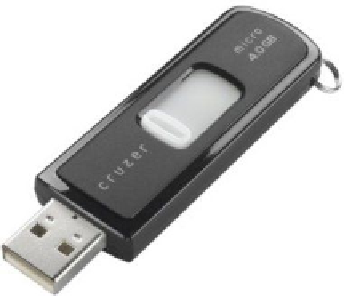Hardware Reference
In-Depth Information
Flash RAM Storage
So far in this chapter, we've looked mainly at mechanical drives—their technologies,
interfaces, and specifi cations. Next we'll look at devices that use nonvolatile RAM to store
data. They're technically not drives, but the term
drive
is widely used for them because
consumers are accustomed to that term for any device that holds data.
As you learned in Chapter 1, some types of RAM are nonvolatile, meaning they continue
to hold whatever you put in them until you make a change. Flash RAM gets its name from
the way it's written and erased. It's a form of
electrically erasable programmable read-only
memory (EEPROM)
, which is memory that, like read-only memory, can hold what you put
in it indefi nitely, but can also be erased and rewritten by a burst (fl ash) of electricity.
There are various sizes and packaging of fl ash RAM storage devices, but what they all
have in common is that they're solid state; that is, they have no mechanical parts. As a
result, they don't wear out from mechanical use, they aren't as susceptible to data loss from
physical trauma, they're silent when operating, and they use much less electricity than their
mechanical counterparts.
Some of the devices in this category include USB fl ash drives (aka memory sticks), memory
cards, and solid-state hard disks. The following sections cover each of those device types.
USB Flash Drives
A
fl ash drive
, also called a
thumb drive
, is a thumb-sized device that stores data on
memory chips rather than on magnetic or optical media (see Figure 2.11). These devices
can hold up to 256 GB of data, and they're useful for transferring fi les between PCs and
between computers and other electronic devices.
FIGURE 2.11
A USB flash drive
A USB fl ash drive's speed is limited to the speed of the USB data bus. There are different
versions of USB, and each has a different maximum speed. Most PCs today have a USB 2.0
data bus, which transfers data at up to 480 Mbps. In contrast, a SATA data bus has a
maximum speed of between 1.5 Gbps and 3 Gbps.






